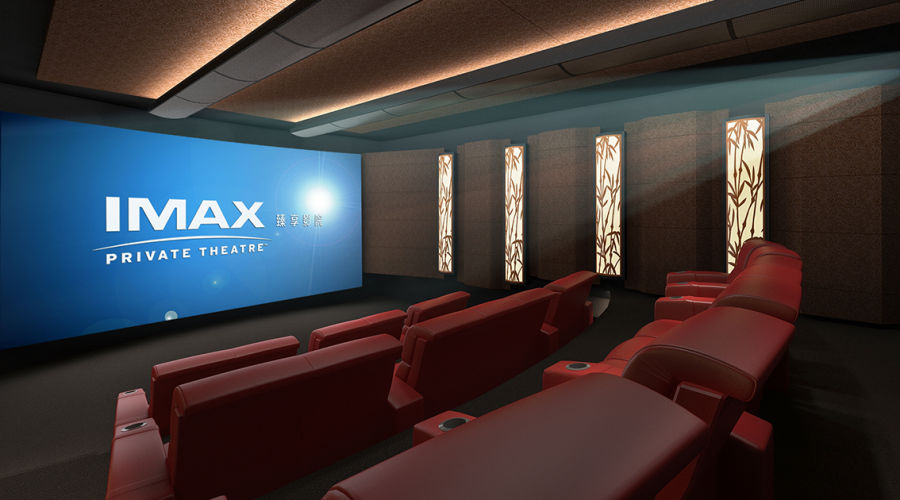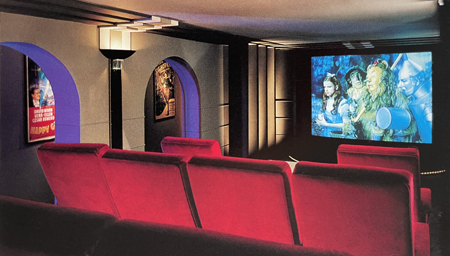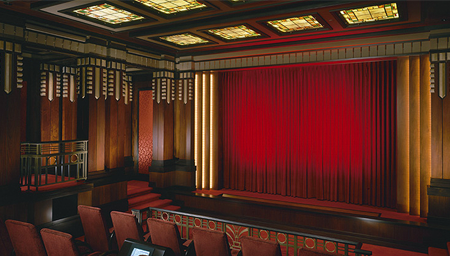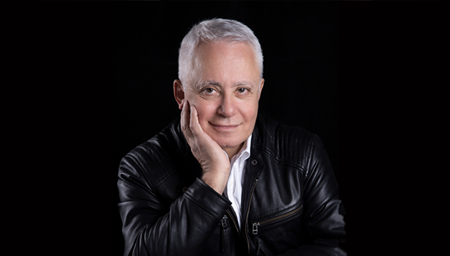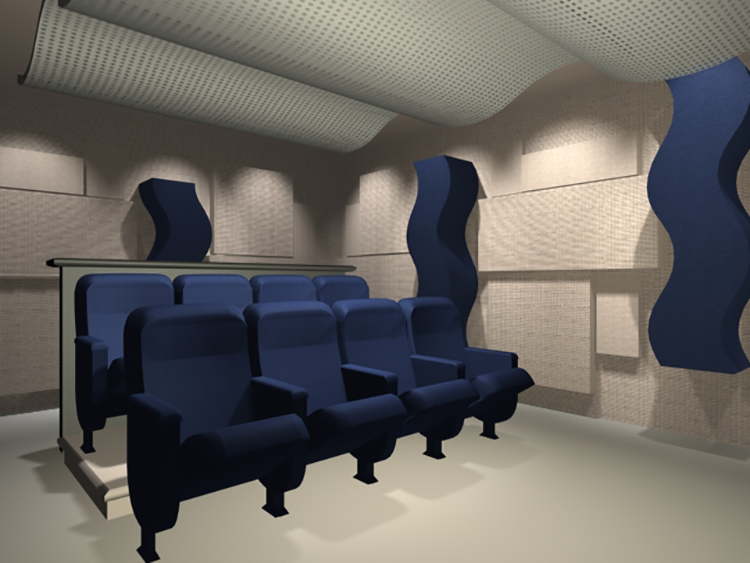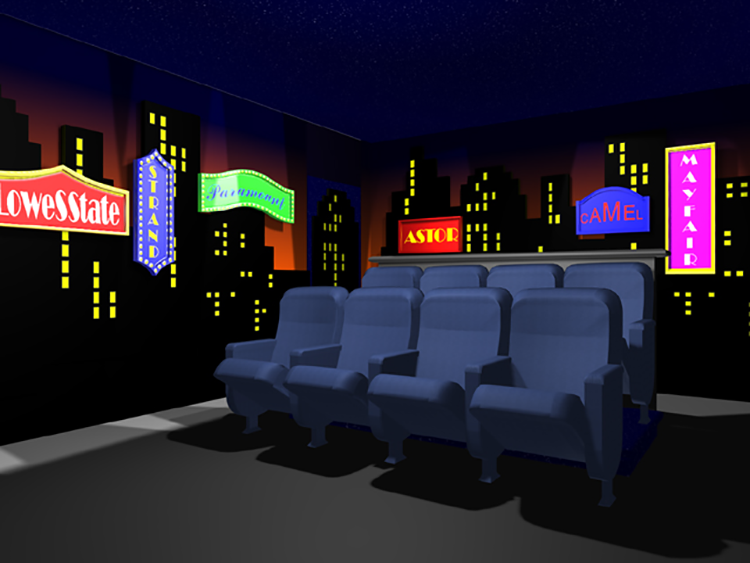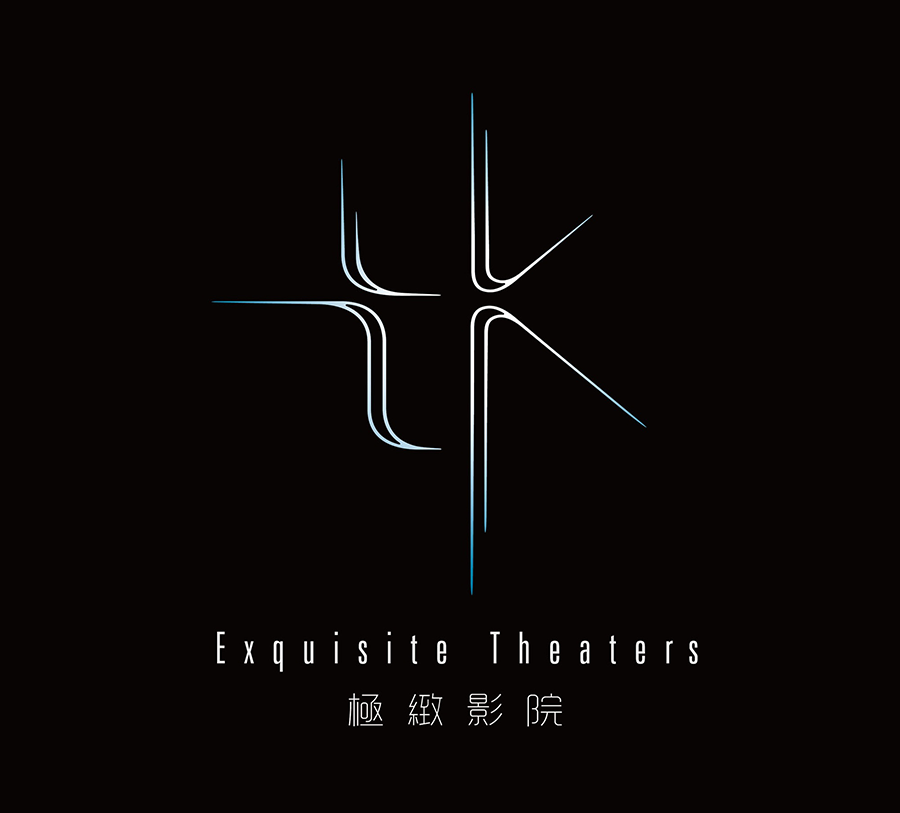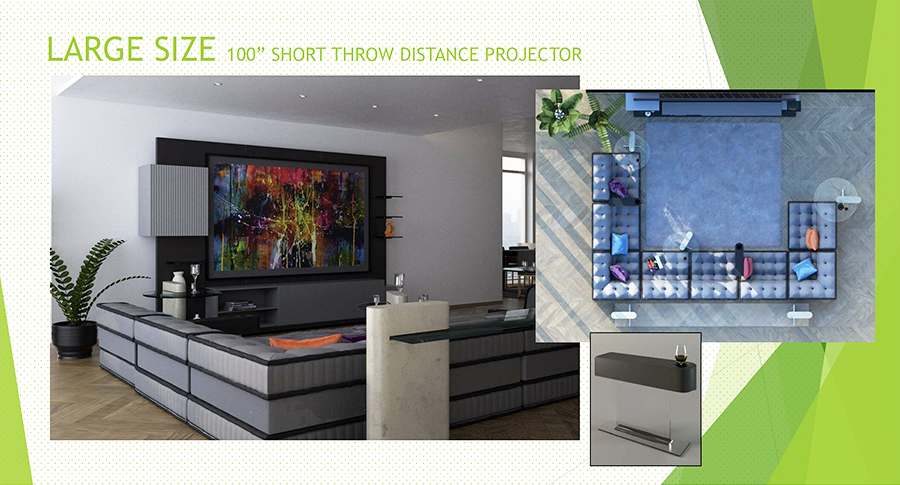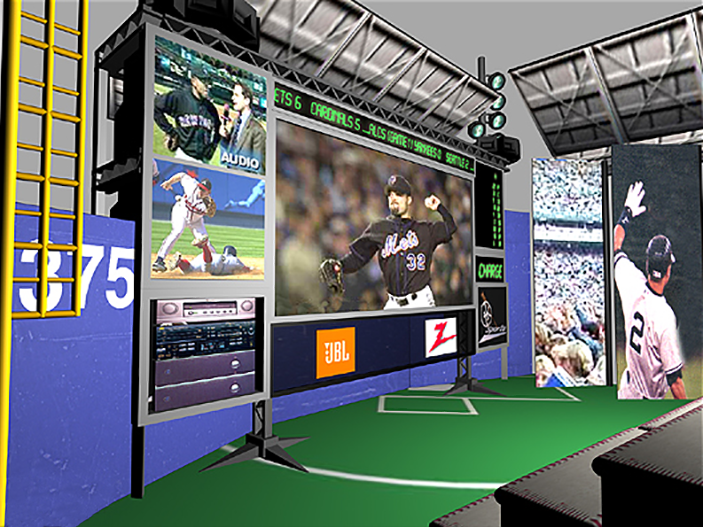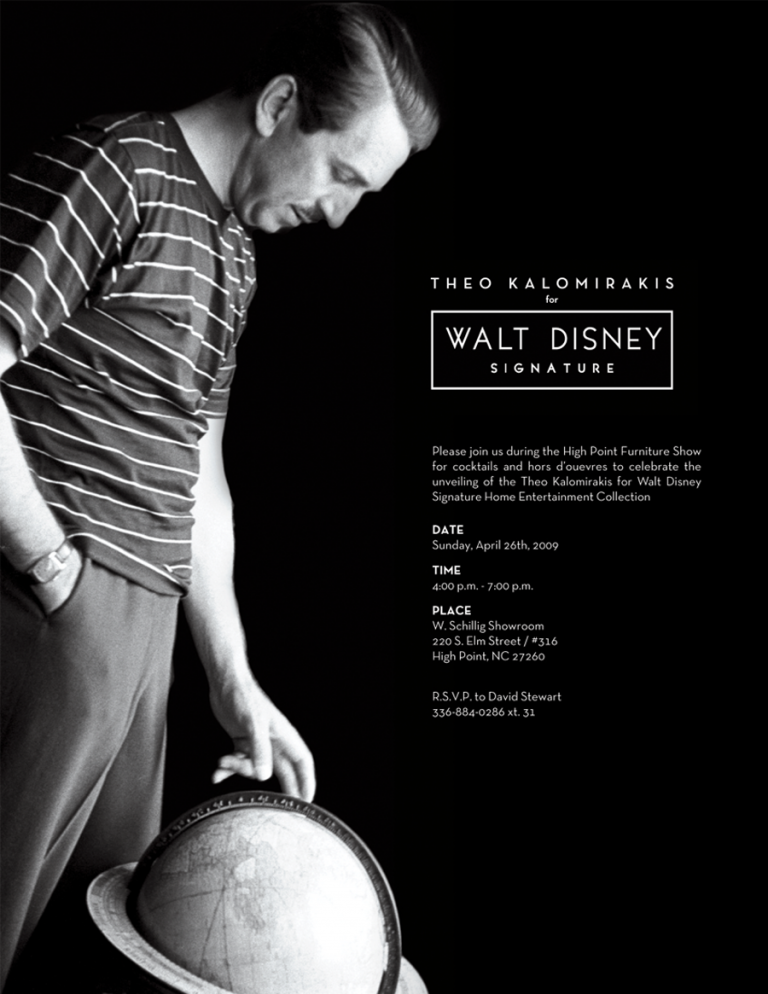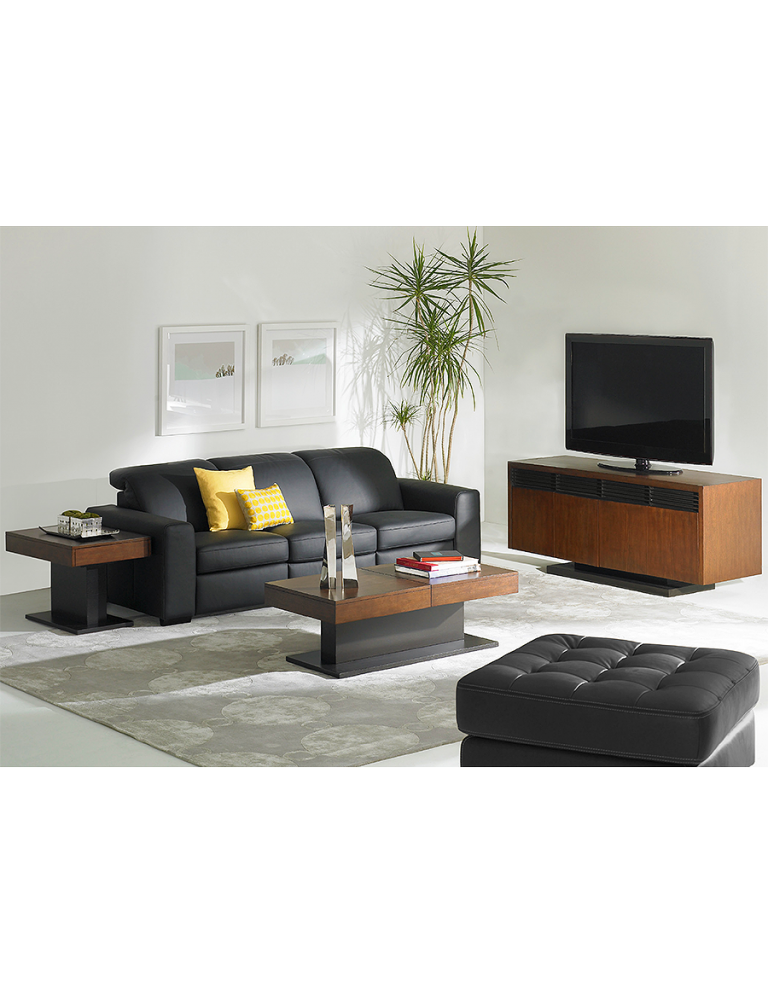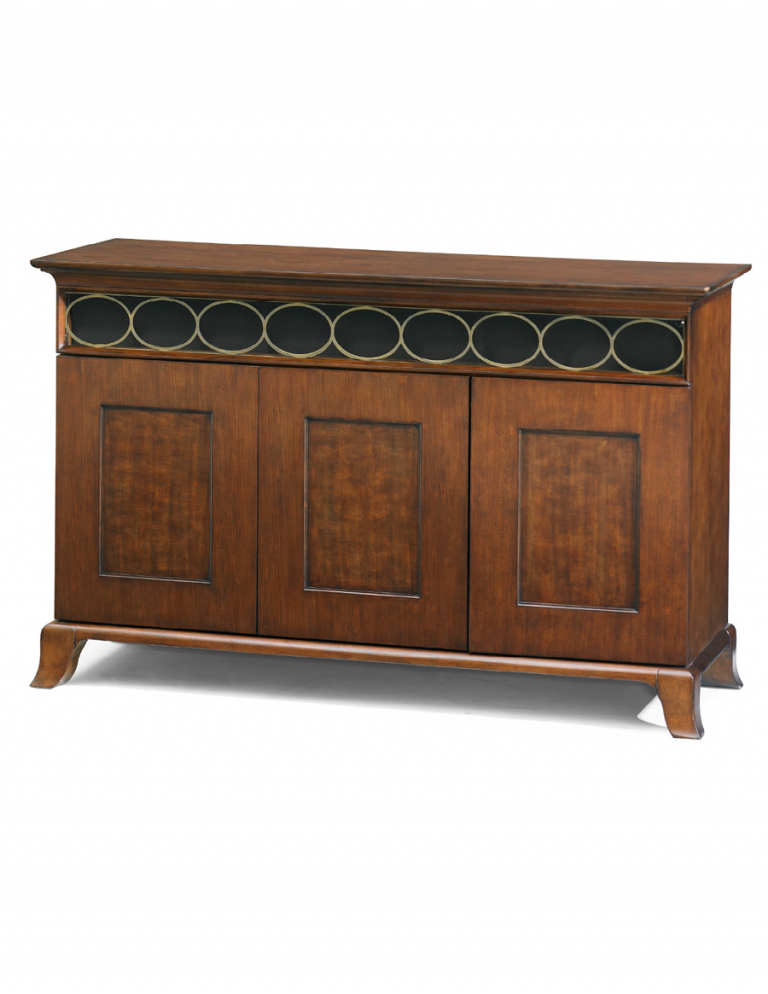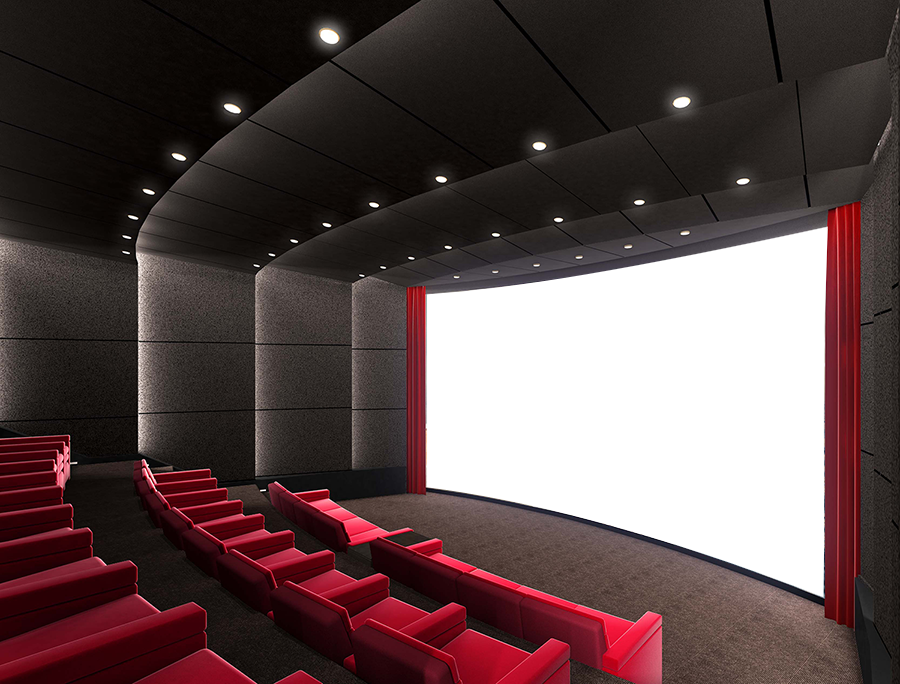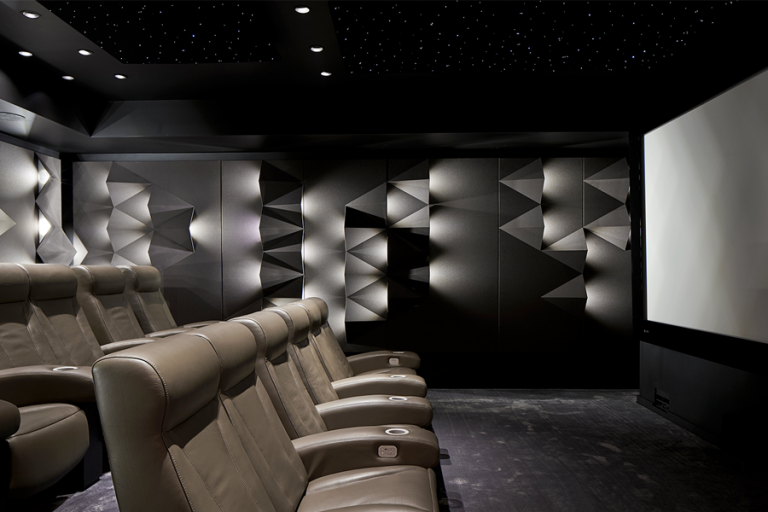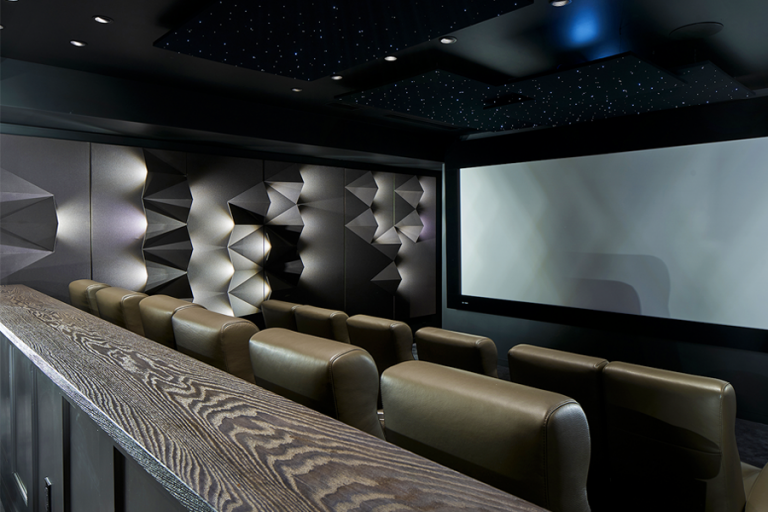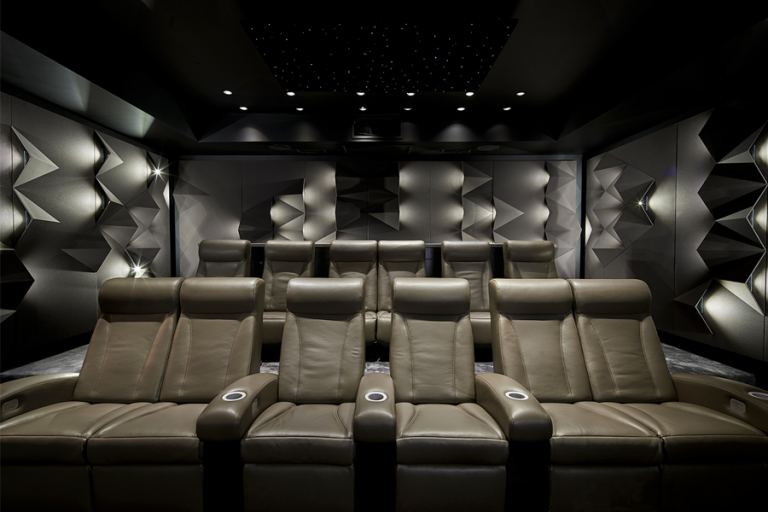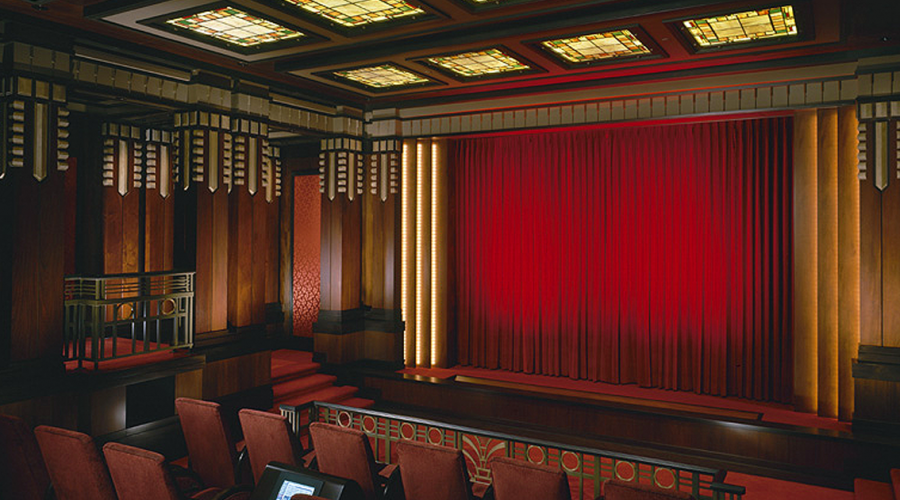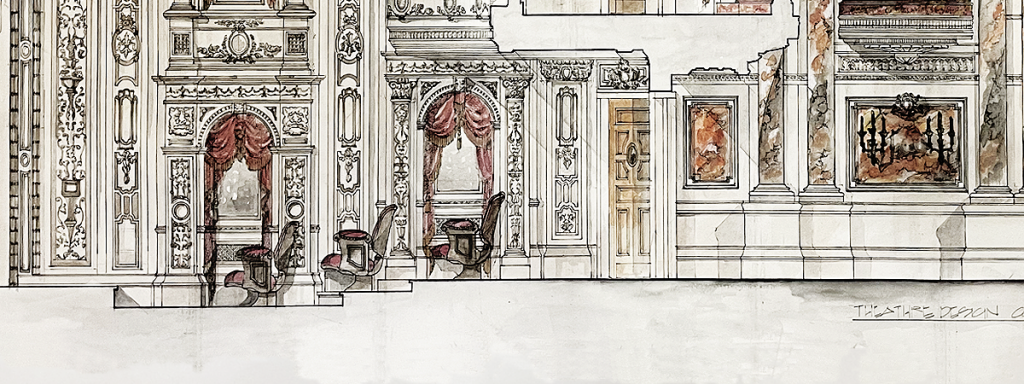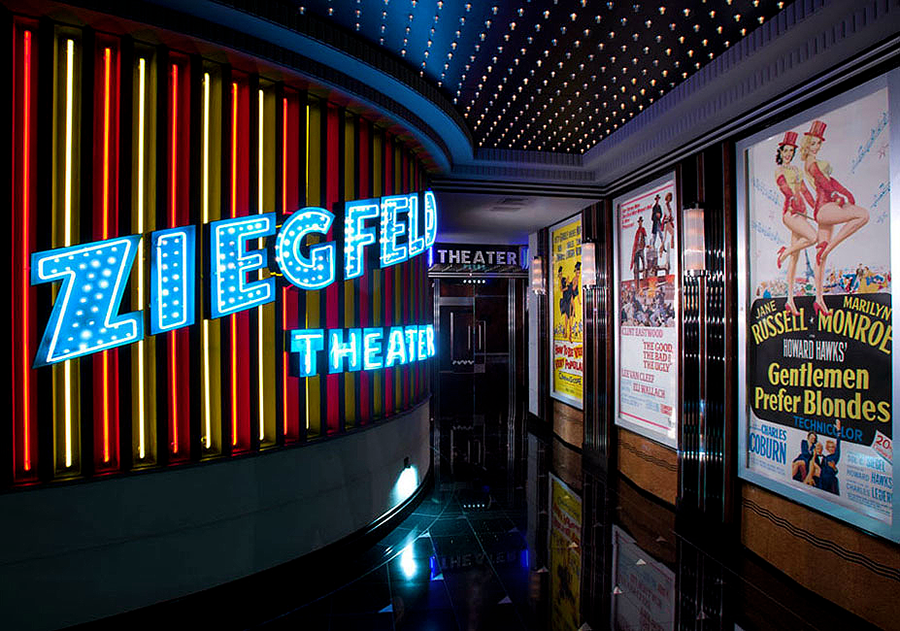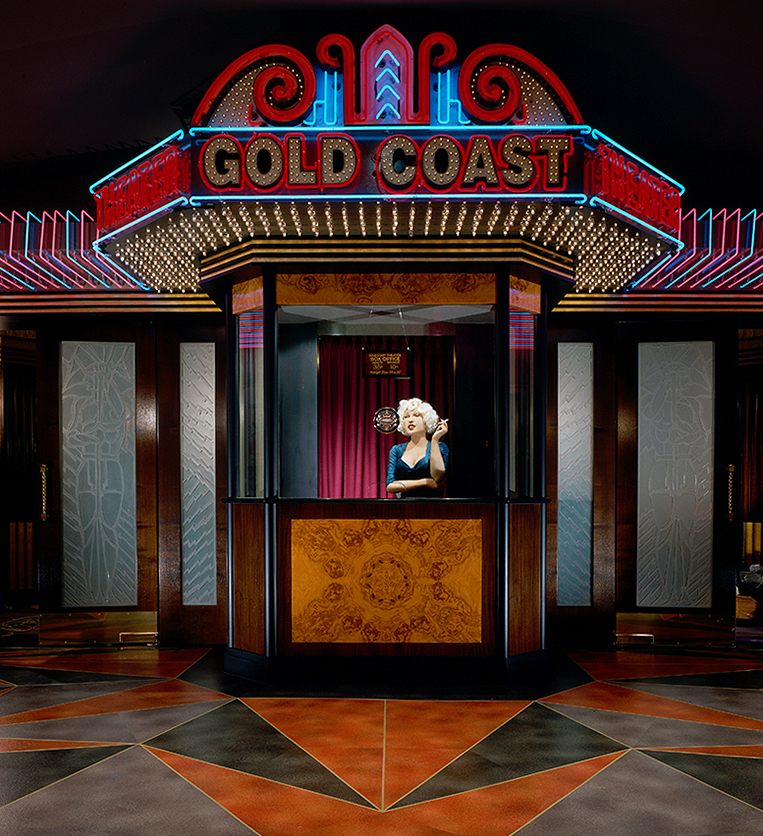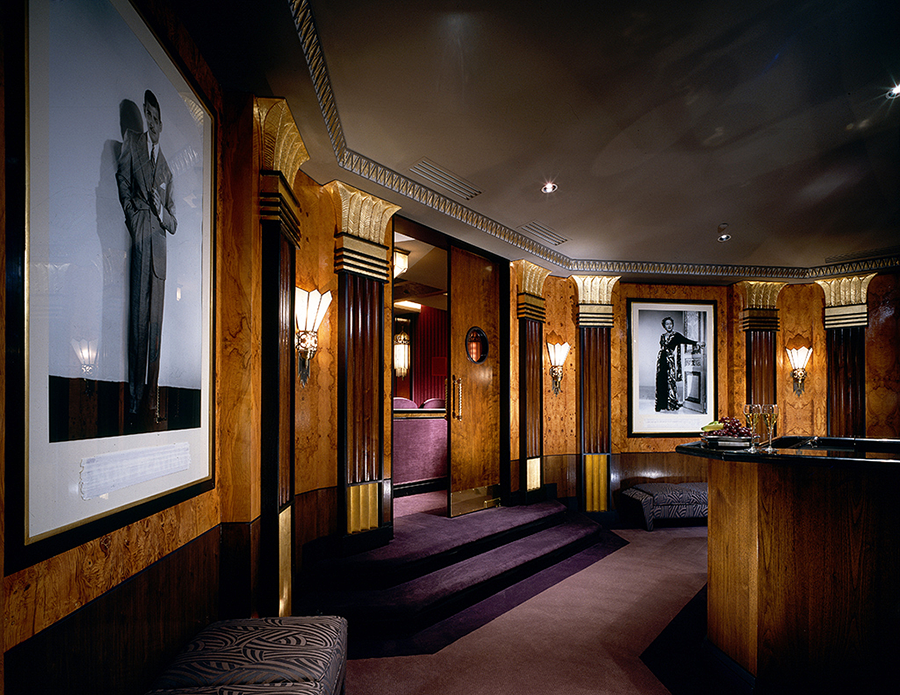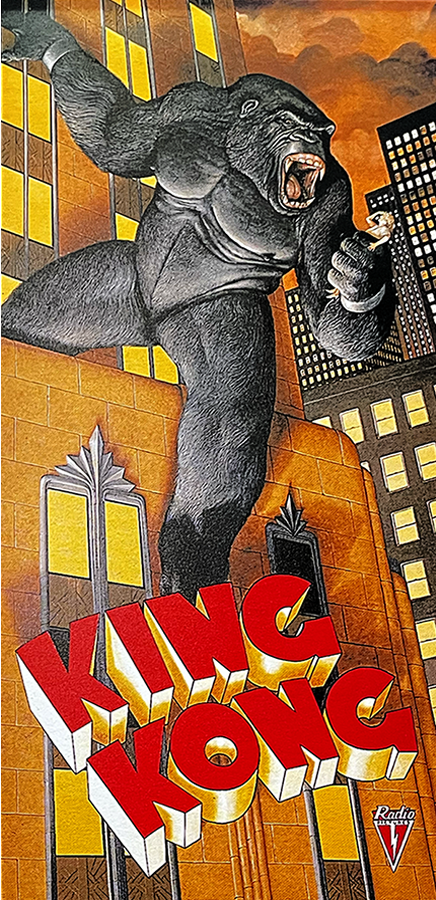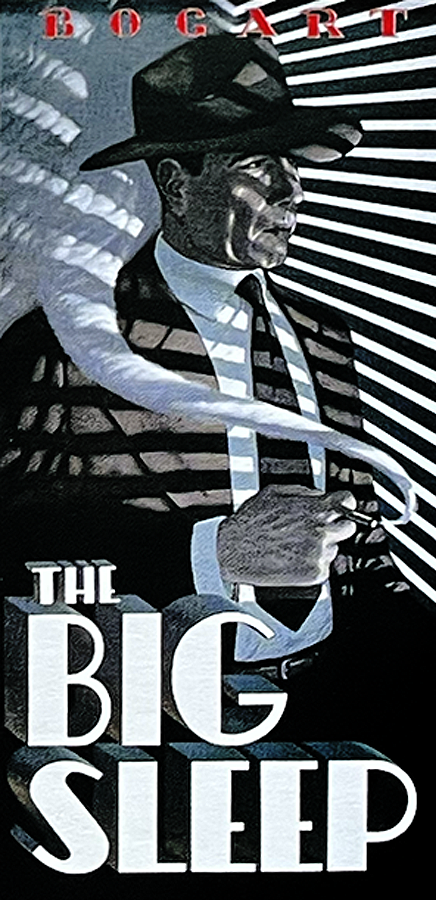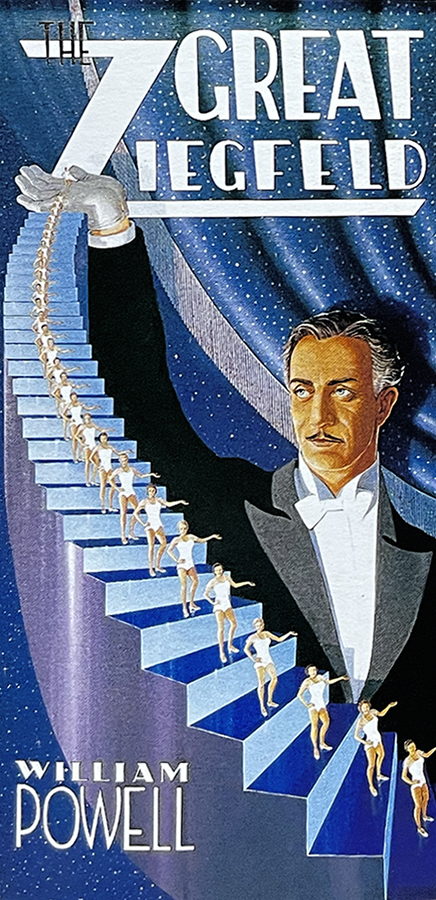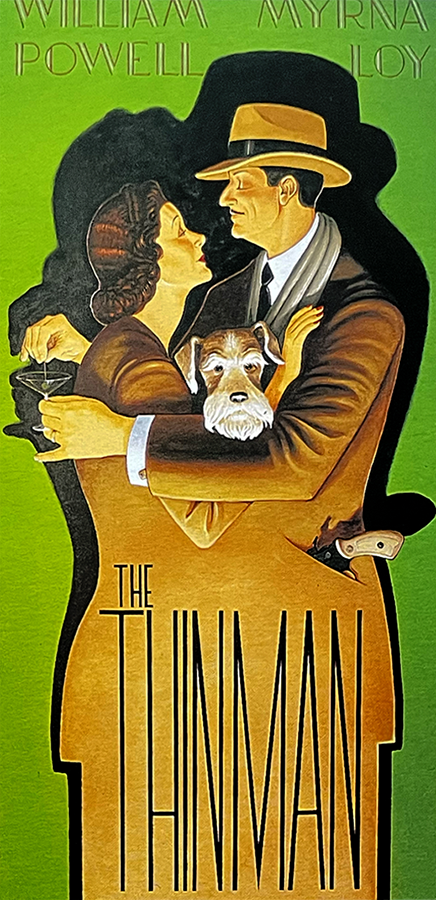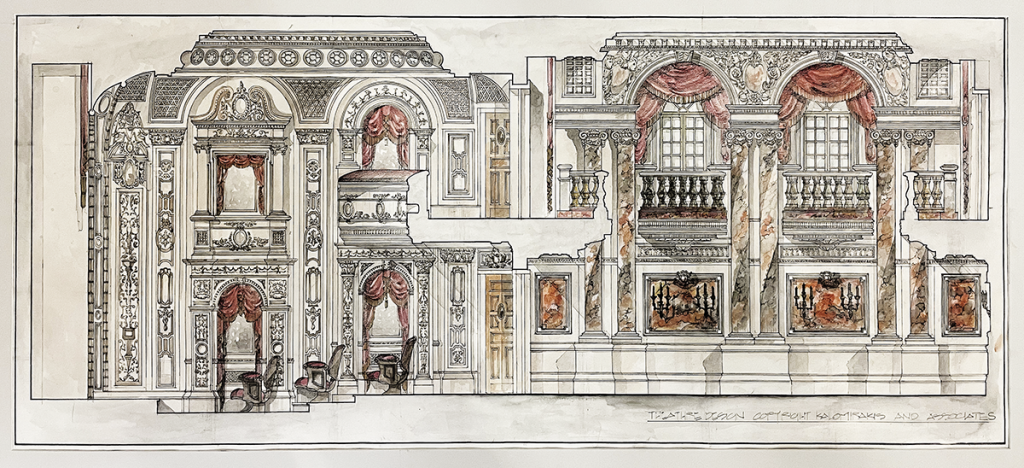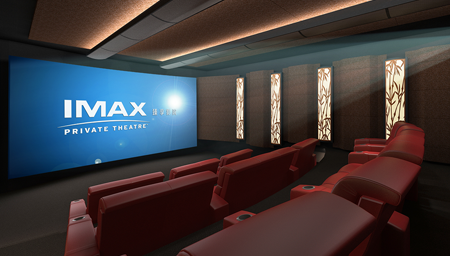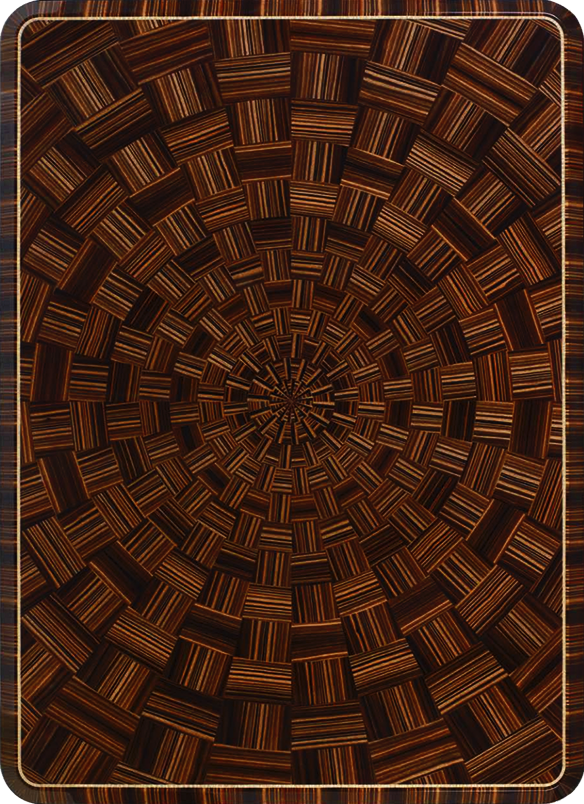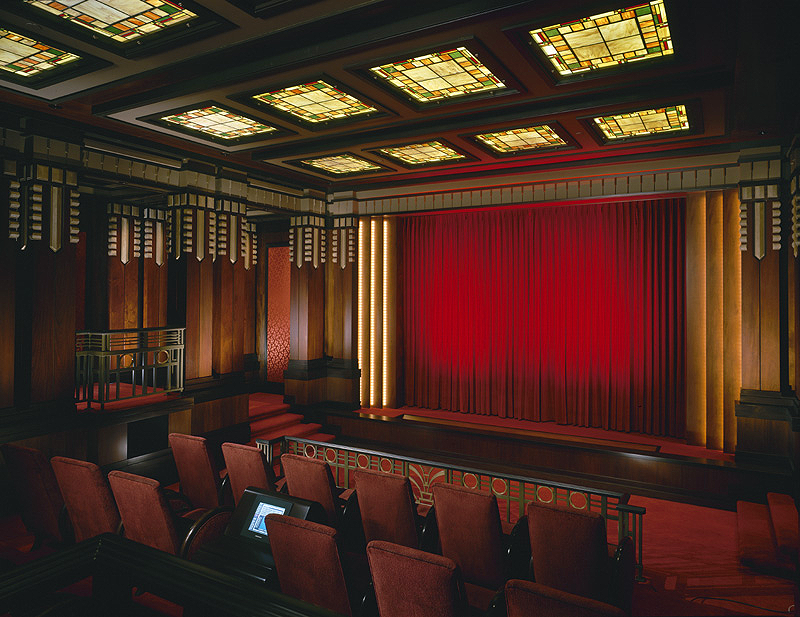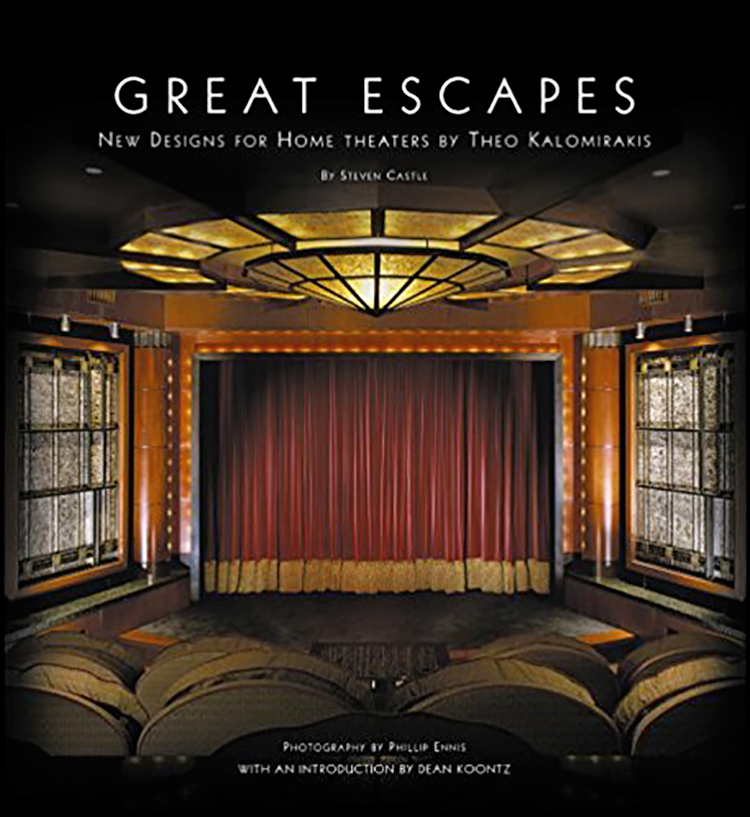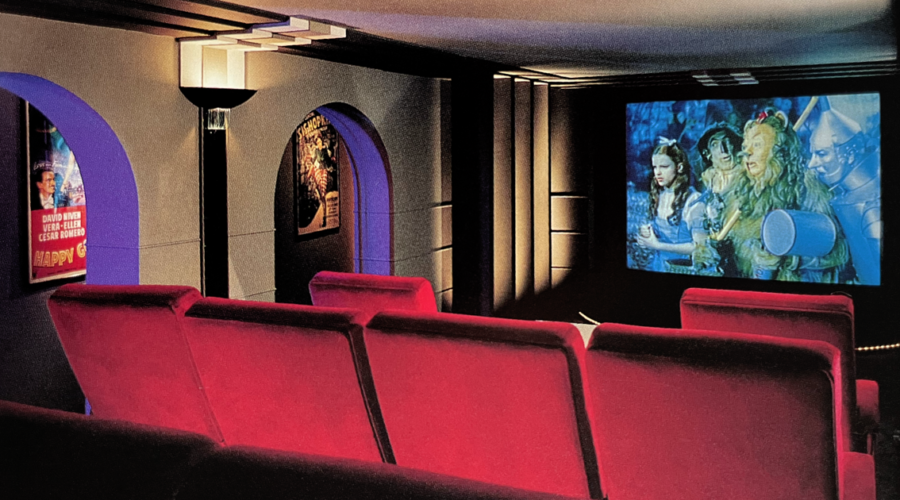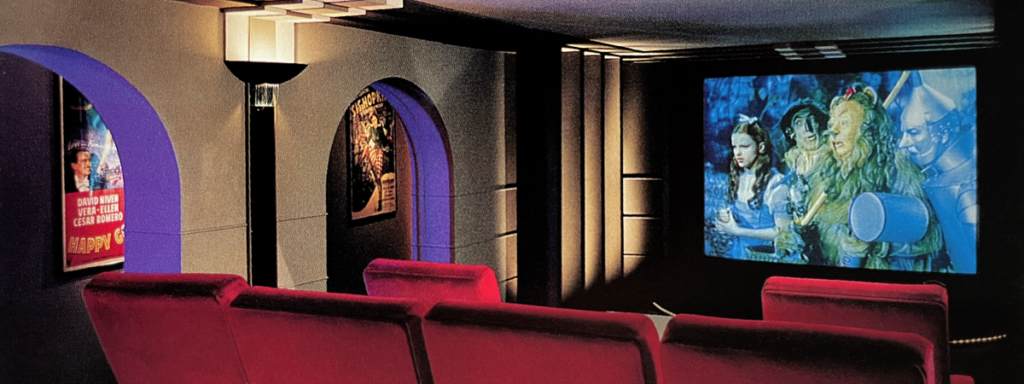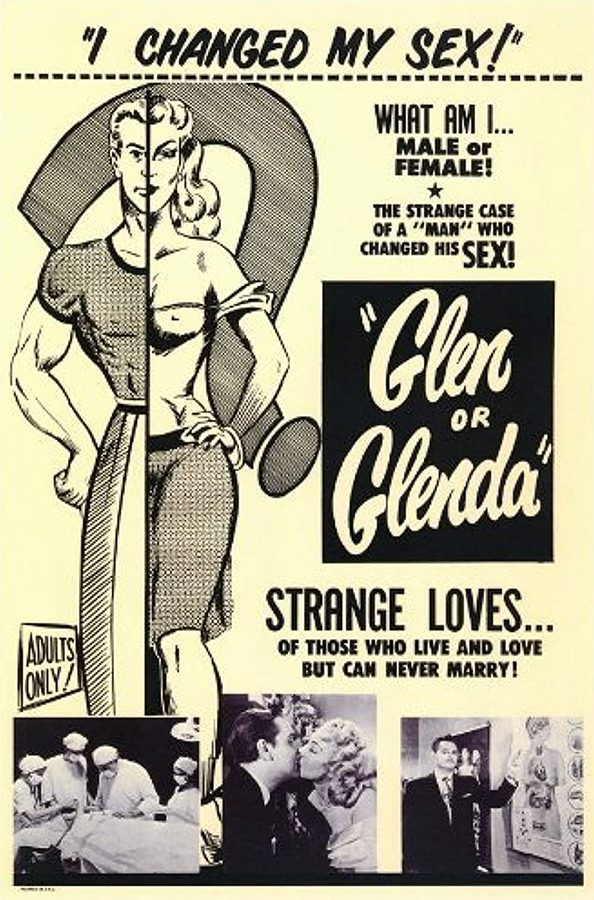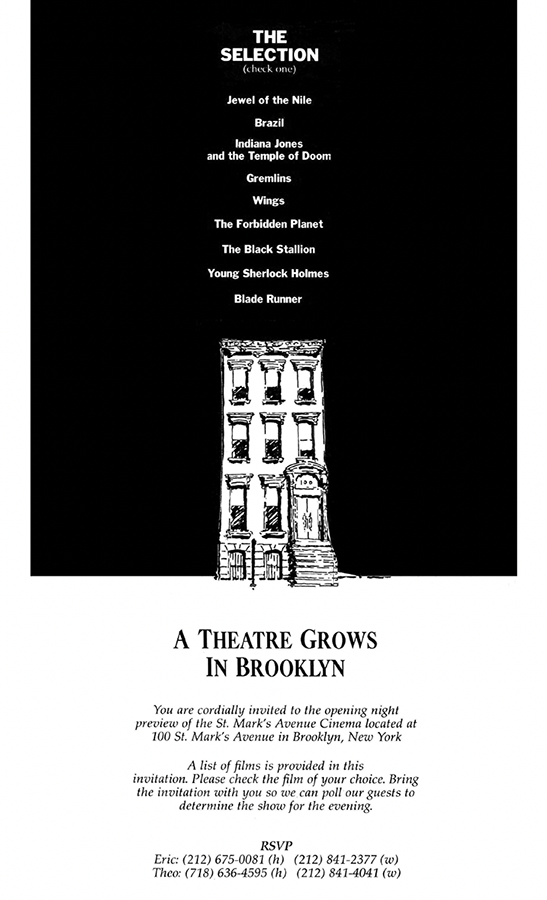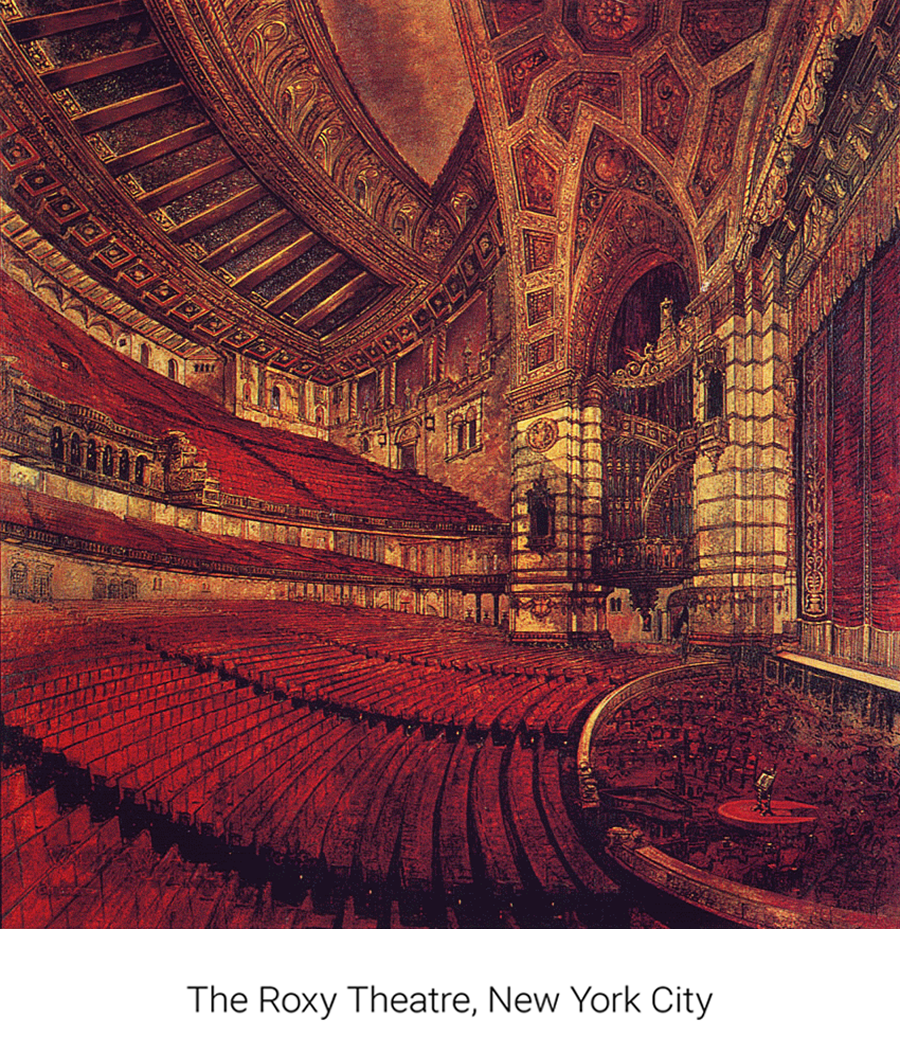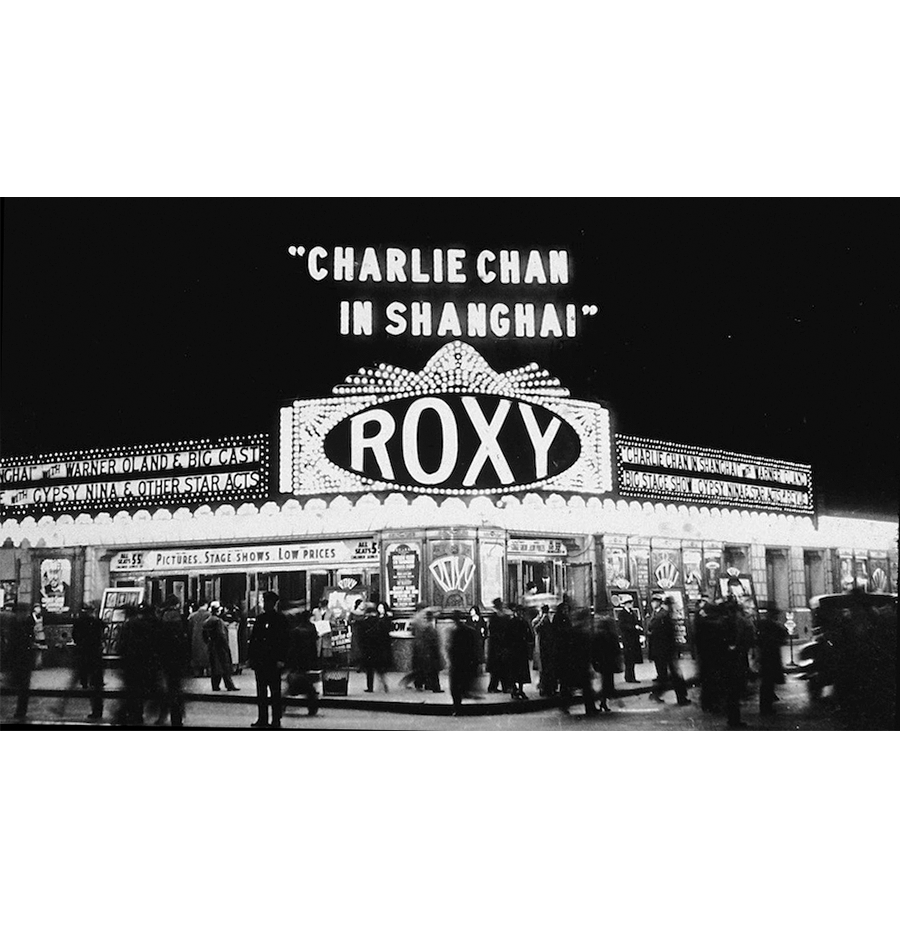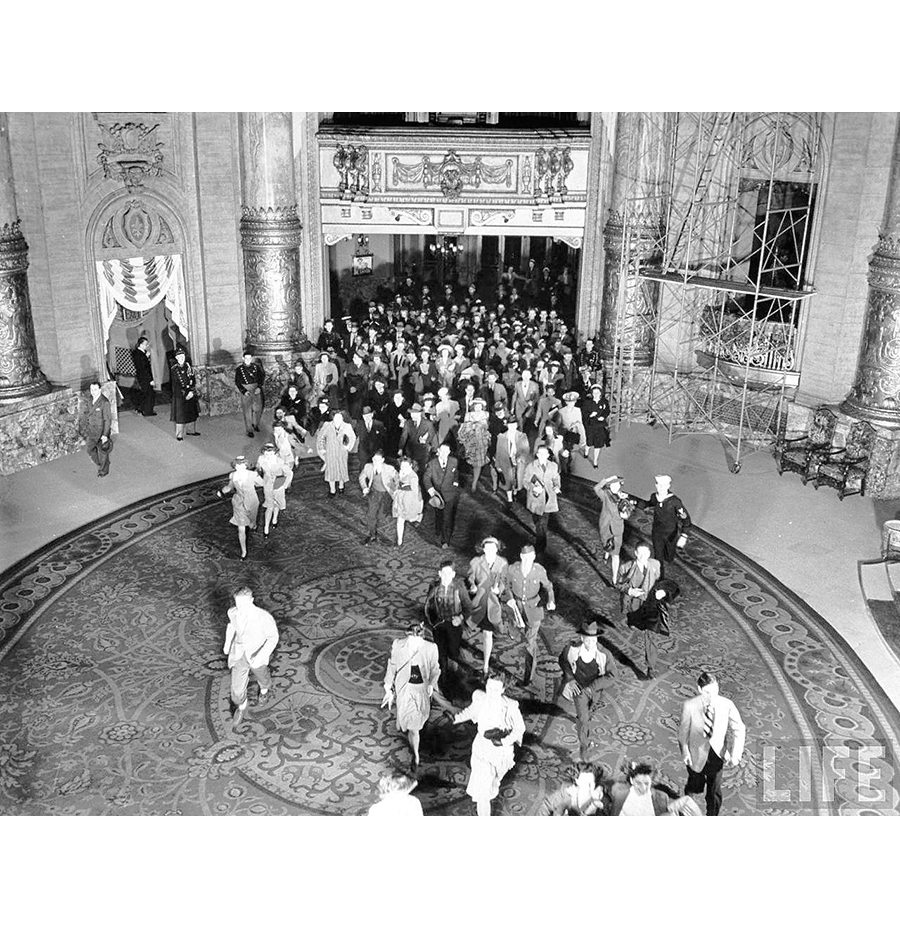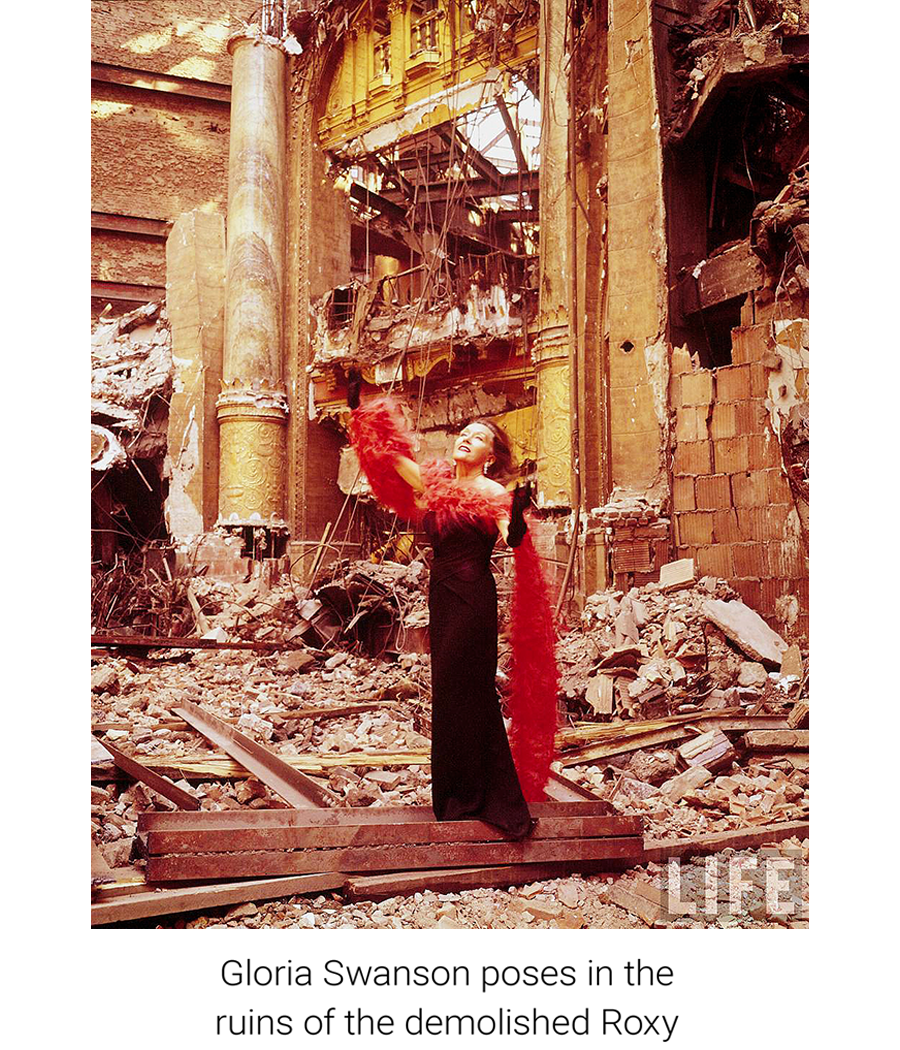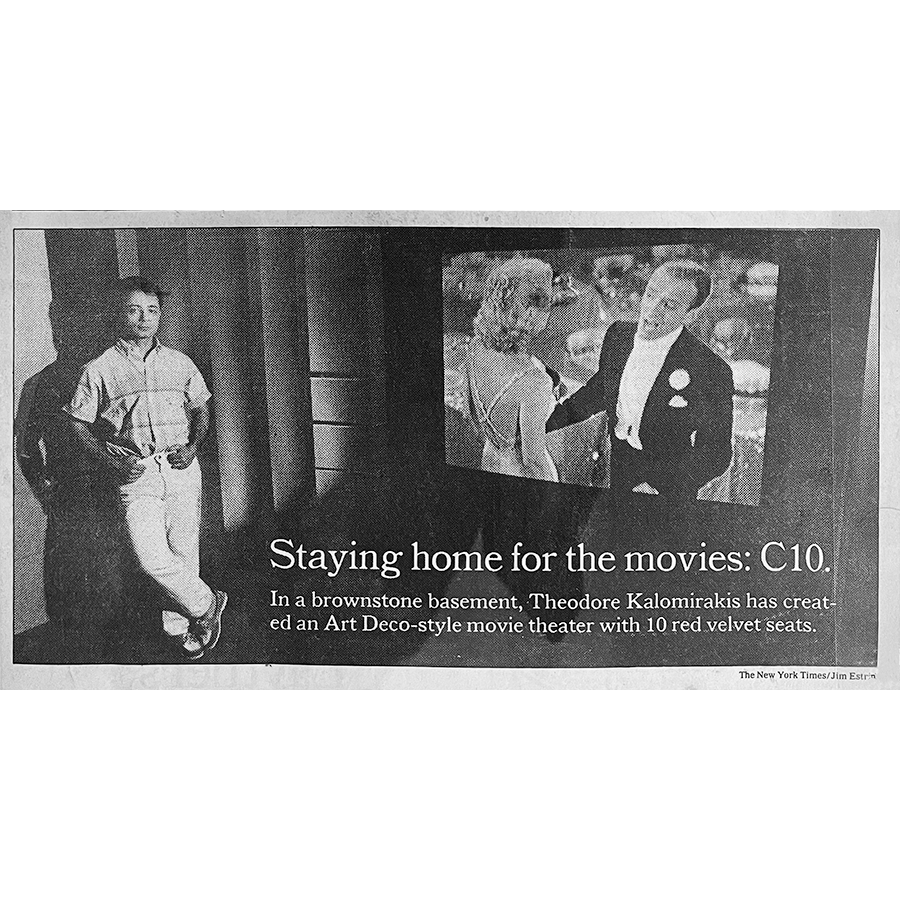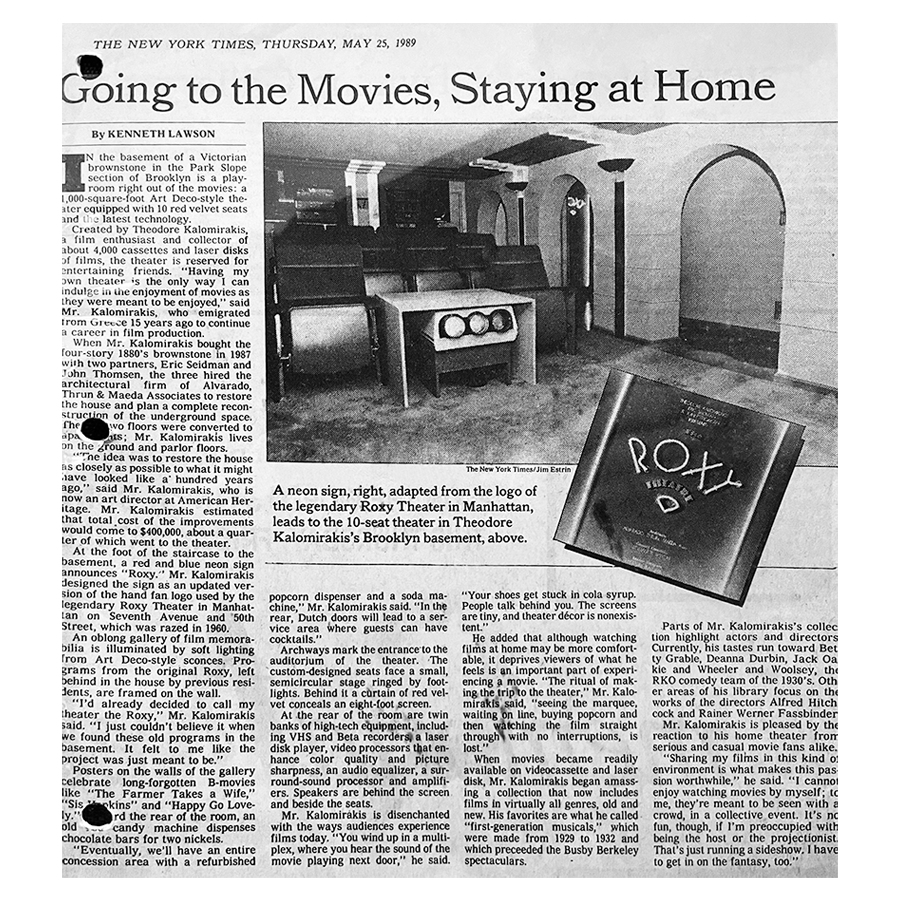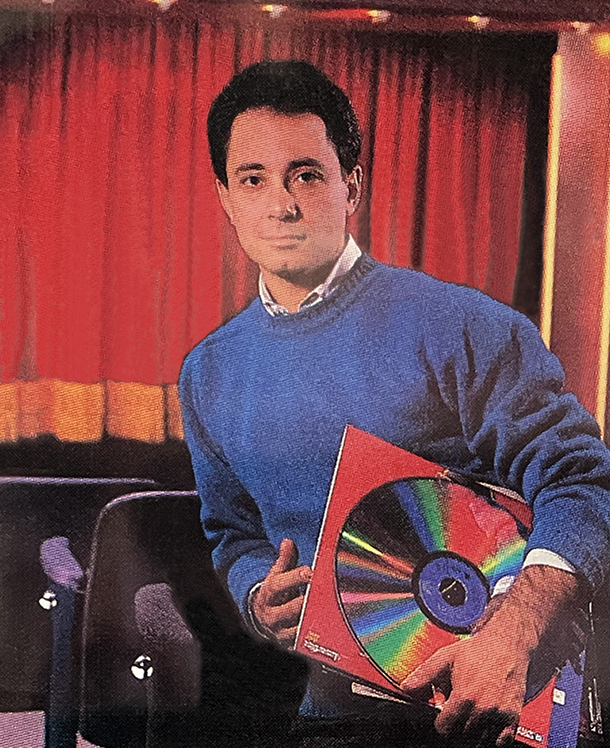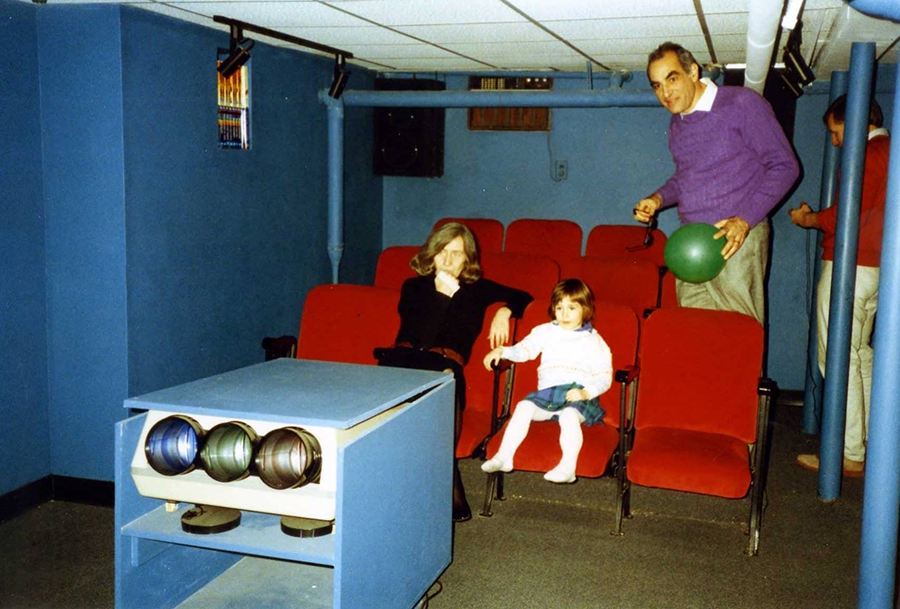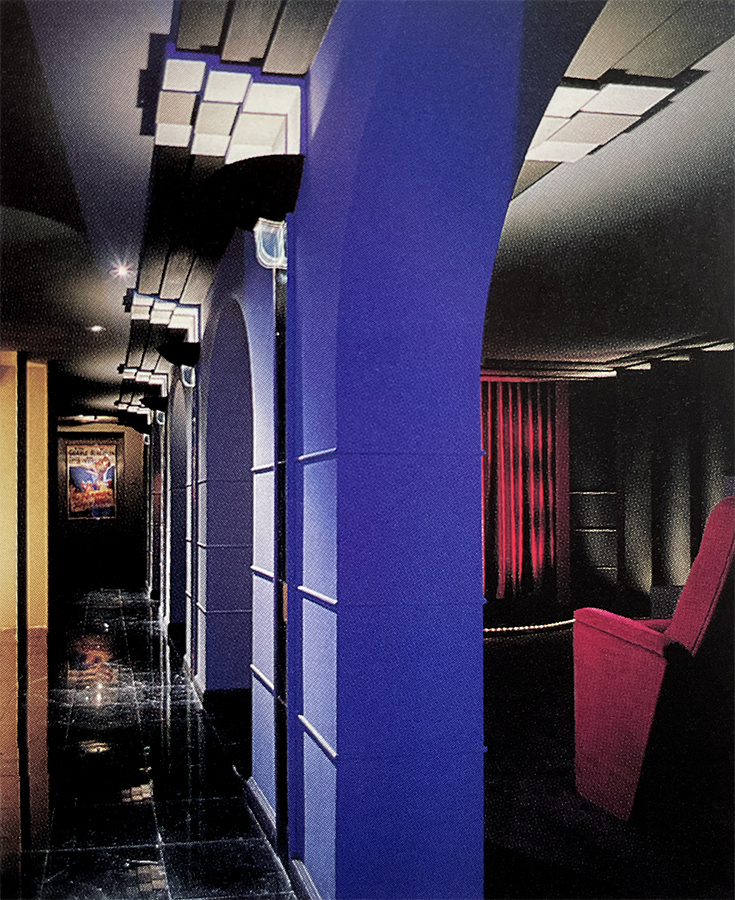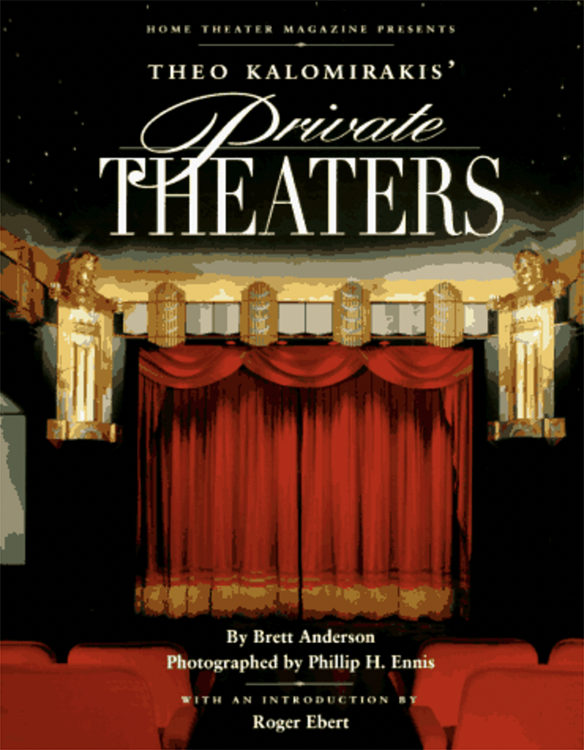Theo Kalomirakis: A Personal History of Home Theater, Pt. 3
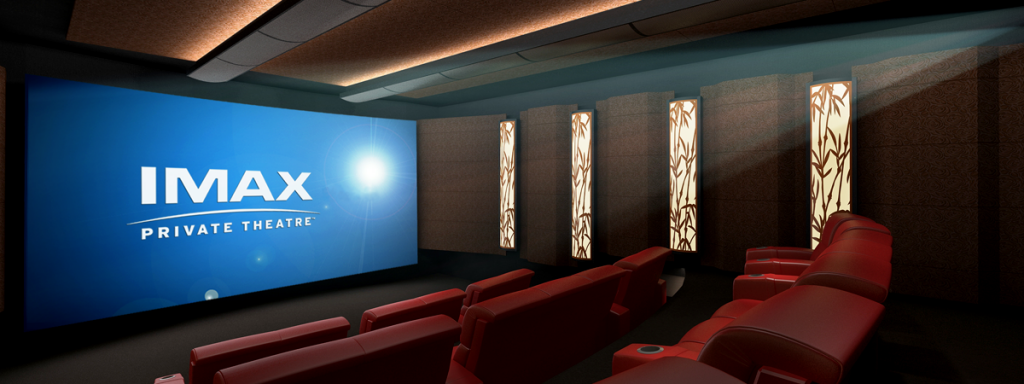
Theo Kalomirakis:
A Personal History of Home Theater, Pt. 3
related features
Theo’s Blue (above) and Broadway (below) home theater designs for Owens Corning
the Exquisite Theaters logo

a column grille for TK Living
The 2000s are mainly a story of Theo’s efforts to have his reputation resonate in the larger market beyond the home theater world
by Michael Gaughn
February 7, 2022
Theo and I have agreed to disagree over how to approach the third part of this interview. I had wanted to focus on the theaters he’s created since the turn of the millennium, which include some of the most striking and innovative of his career, most of which have never been published and none of which have been collected in a book. But he was adamant that we should focus instead on his various efforts to create a broader-market brand for himself. I relented for two reasons: Because I knew he would make the subject compelling and because, as he rightly said, “Talking about projects is misleading regarding how my career developed, and I know my career better than anybody.”
—M.G.
When did you first feel the urge, or need, to brand yourself in the larger market?
I began shifting my attention away from creating custom designs around 2000 because other designers were beginning to do home theaters, so that stopped being the exclusive territory of my company. But I had actually first come up with the idea of creating home theater products as a way to stay ahead of the game back at the start of the ‘90s with my first company, Theater Design Associates. Even though that effort turned out to be premature, I never abandoned the idea.
My dream was to create a category of pre-designed and pre-packaged theaters. Companies like Cinematech, Acoustic Innovations, and AcousticSmart have done that successfully within the AV industry but I wanted to reach out to the world beyond the industry. I found a way to do that with the help of large organizations such as Owens Corning, Disney, and IMAX, which had the means, name recognition, and brand awareness. They gave me the opportunity to access that larger market where my name was relatively obscure.
How do some of your other efforts like ESPN fit into all this?
Companies like ESPN, Hammacher Schlemmer, Henredon, and Roche Bobois approached me over the years to help them develop home theater-related products but there was always some obstacle. With ESPN, the product didn’t even make it out of the lab because it was too high-end. The electronics they were considering for the
entertainment console would have retailed for over $80,000, which would have extremely limited sales.
Has part of the problem been that the market wasn’t ready for what you were offering—that you were thinking well ahead of where the market was?
On the one hand, I think that was the problem. On the other, I think I was unrealistically optimistic, and I made mistakes. But I believe I now know what didn’t work with each of the partnerships.
With Owens Corning, they thought a home with a theater would be more attractive than one without, so they spent millions to develop a line of inexpensive, all-inclusive theaters. The builders they targeted weren’t the big, custom ones that do one or two large homes a year but the ones that build hundreds of homes a year. The biggest mistake we made—and I share the blame—was that we aimed at the lowest possible price for a theater—$40,000 for homes that sold for around $250,000. But we found out at the Atlanta Builders Show in 2000 that most of those homes only had two bedrooms. What self-respecting parent would kick their kids out of the second bedroom to put a theater in it? Owens Corning also offered the option of having the theater in the basement but that didn’t increase the market size enough.
Your next big collaboration was with Disney, but that wasn’t until a few years later, right?
That began in 2008 and went until 2011. A group of Disney executives came to a lecture I was giving to designers at the Pacific Design Center. They were looking for licensees to help them launch co-branded products for the luxury market under a new brand called the Disney Signature Collection. They told me they wanted to appeal to a more affluent segment of consumers who liked the idea of being associated with the Disney brand but “without the Mickey Mouse ears.” The other Signature licensees developed products such as fabrics and pottery, while I was offered the opportunity to develop a line of plug & play entertainment furniture that had the necessary electronics already built in.
We conducted numerous design meetings where the Disney team and I would sketch out and exchange ideas. We also spent months in China looking for factories to produce the furniture. Everybody opened their doors to Disney, which was fun to watch. That was a very creative period of my life. I was impressed by how organized and methodical they were about defining and developing a product.
As with Owens Corning, Disney wanted a bigger market than just the AV industry, and I related to that. We rented a showroom at the heart of the furniture market, in High Point, North Carolina, where we presented the collection to retailers. And we hired marketing directors from the industry who introduced the collection to all the major furniture stores.
At the time, it seemed like the collection was going to be a home run for you. Why do you think it didn’t catch on?
What we found out was something the furniture industry already knew—very few store owners want to deal with electronics. So most of them waited to see if other retailers would buy into it. They didn’t want to be first to stick their toe in a pool they weren’t very familiar with. As a result, Disney started losing interest and slowed down its marketing support. I think I was the last licensee to pull out. I realized then that even a strong brand isn’t enough to capture a new market.
Your next couple of projects seemed to keep you in China almost constantly for a couple of years.
I had met a lot of people while I was traveling there for Disney, including Stevie Ng, who is still a good friend. He was involved in the Chinese AV industry and knew about my efforts to develop pre-designed theaters. As the Disney business was winding down, he asked if I would be interested in designing theaters for his company, Alpha Technologies of Shanghai. We partnered with a strong AV dealer/distributor, Beijing AV Design, and created a company called Exquisite Theaters. We installed theaters in dealer showrooms in major cities throughout China.
Here I was again speaking to the press, inaugurating showrooms, and enjoying the experience while getting to know a new market. The theaters were meant to help sell design accessories and electronics but the problem was that the interiors required a lot of customization. Not living in China, it was hard for me to commit to working on too many of them. But the dealers didn’t seem to mind that much because the showrooms gave them a chance to give great home theater demonstrations and sell electronics.
When did you start designing IMAX theaters for the home market?
That was around that same time. Robb Report came to me and said, “We want the ultimate gift for this year to be an IMAX theater.” And IMAX said, “We’ll give you the equipment for the theater and see how the story does.” It actually created quite a stir, so IMAX decided to come up with a line of theaters, which they called IMAX Private Theatres. I worked with them to design the line, which we made available in the US but mainly in China. The theaters were spectacular but they were too expensive to sell very many. Still, it was thrilling to sit in one of them and be treated to the full-blown IMAX experience.
You did one for Seth MacFarlane, right?
Yes, that was the best IMAX theater I designed.
Is there anything you want to say about TK Living?
The major stops in my career were working with Owens Corning, Disney, and IMAX. TK Living, like Exquisite Theaters, was mainly an effort to sell home theater design accessories. To help customers create a design, I devised theater templates in Art Deco, traditional, and contemporary styles that they could use to apply different colors and finishes. Our most successful product was an extensive collection of acoustic fabrics, which my associate James Theobald still sells.
And that brings us to Rayva, which is your most recent effort to create a franchise.
Rayva is probably my final effort to create pre-designed theaters. From a product perspective, it is the most successful company I have worked with. Rayva has gotten wonderful support from its great chairman and our lead engineer, and from the dedicated team that still works for the company while I have moved to Greece. My only regret has been that we depended too much on the AV industry to sell the theaters. I believe the time has come to sell directly to end users but that requires a lot of money. Making that investment will reap huge rewards from what I and our industry have done so far for home theater. Roger Ebert wrote almost 25 years ago in the introduction to my first book, Private Theaters: “Henry Ford wanted to put a Model T in every garage. Theo Kalomirakis wants to put a theater in every home.” I was far from alone in making that happen, but Roger’s prophecy isn’t just a prophecy anymore.
Michael Gaughn—The Absolute Sound, The Perfect Vision, Wideband, Stereo Review, Sound & Vision, The Rayva Roundtable, marketing, product design, some theater designs, a couple TV shows, some commercials, and now this.
A rendering of one of Theo’s designs for the IMAX Private Theatres line
click on the images to enlarge
(above) a sports-themed home theater design for ESPN, and (left) a media wall unit created for Roche Bobois
the invitation to the launch of the Disney Signature furniture collection, with examples from the Toccata and Symphony lines
a rendering of Seth MacFarlane’s IMAX home theater
Origami photos by Phillip Ennis
Rayva’s Origami theater design
© 2025 Cineluxe LLC
